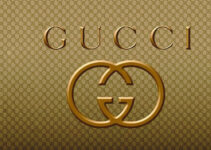Coca-cola is an American soft drink manufacturing multinational brand. John Stith Pemberton established the soft drink manufacturing company Coca-cola in 1886. Today, we’ll discuss the Ansoff matrix of Coca-cola; four growth matrix strategy quadrants; market penetration, market development, product development, and diversification of the Ansoff matrix company example.
Marketing Penetration Strategic Campaigns of Coca-Cola
- Advertisement campaigns with catchy phrases
- Employing TV, print media, digital, and social media channels
- Sponsoring mega sportin events
- Brand endorsement from famous celebrities
- Sports figures as brand ambassadors
- Launhcing fun and joyful challenge
- Associating with world’s cultural events
Top Selling Markets of Coca-Cola
- Asia Pacific – 3.3 billion customers in 37 regional markets
- EMEA (Europe, Middle East, Africa) – 2.1 billion customers in 130 regional markets
- Latin America – 525 million customers in 39 markets
- North America – 320 million customers
Latest and Best Selling Collection of Coca-Cola
- Powerade and other Cola Brands – 14%
- Diet Coke – 17%
- Barq’s, Sprite Zero and Coke Zero – 14%
- Coca-Cola – 26%
The Ansoff matrix of Coca-Cola would focus on the four growth matrix strategy quadrants; market penetration, market development, product development, and diversification. Here’s Coca Cola Ansoff matrix business example as follows;
Ansoff Matrix of Coca-Cola
Let’s discuss the four growth matrix strategy quadrants in the Ansoff matrix of Coca-Cola as an Ansoff matrix company example; they’re as follows;
Market Penetration Strategy of Coca Cola
The market penetration quadrant in the Coca Cola Ansoff matrix company example as growth matrix strategy has the lowest risk. It is because here the soft drink brand sells its current products and services in the existing customer market. However, the soft drink market is growing, and the market penetration growth strategy is possible.
I-Cultural Association
Coca Cola develops associations and links with various cultures, holidays, and events to further penetrate the existing market. For instance, Coca Cola focuses on the red color resemblance during the Christmas season. The soft drink brand attaches itself to Eid in Muslim countries.
II-Acquisition
In order to decrease the competition in the soft drink market, Coca Cola acquires its competitors and competitive brand to stabilize its position in the existing market.
III-Different Sizes
Coca Cola offers its products in different sizes of bottles and cans in order to satisfy the needs and wishes of customers.
IV-Discounts
In order to increase the sales in the existing market, Coca Cola offers different types of discounts and bundle discounts. In fact, Coca Cola offers free bottle samples in certain events to attract the attention of customers.
V-Aggressive Marketing
Along with sponsoring mega sports and community events, Coca Cola runs aggressive marketing and advertisement campaigns on various platforms and channels. It provides significant brand exposure and helps the company to increase its sales.
Market Development Strategy of Coca Cola
The market development quadrant in the Coca Cola Ansoff matrix company example as the growth matrix strategy has a bit higher risk than the market penetration strategy. It is because here you expand your soft drink market and offer your current product portfolio in the new market. However, you don’t know the culture and response of the new market; that’s what makes it riskier.
I-Global Market
According to an estimate, Coca Cola is operating its business in more than 200 countries across the globe. But there are some regions and geographies where the soft drink needs to expand its business there.
II-Market Acceptance
Coca Cola has established a well-diversified portfolio and it comprises a wide range of beverages and drinks. In order to increase the local market acceptance rate, Coca Cola offers different types, sizes, and tastes of drinks and beverages in different markets.
III-Brand Ambassador
Coca Cola also hires various sports celebrities and public figures from different parts of the world as its brand ambassadors. They have a huge fan following, and their personality influence helps the company to further amplify its market.
Product Development Strategy of Coca Cola
The product development quadrant in the Coca Cola Ansoff matrix company example as the growth matrix strategy has a higher risk than the market penetration strategy. It is because here you launch a new product service or soft drink in the existing customer market. You would have to run new marketing and promotional campaigns for the new product and it makes it riskier.
I-New Product Variants
Ever since its foundation, Coca Cola has been increasing its soft drink portfolio and regularly launching new types of product variants as a part of Coca Cola’s product development strategy. According to an estimate, Coca Cola is currently offering more than 500 types of soft drinks and beverages under different brand names. Some of them are as follows;
- Sprite
- Coke Zero
- Fruity Flavors
- Fanta Variants
- Cola Zero
- Diet Coke
New labeling, new brands, new ingredients, and new tastes would help the company to launch a new soft drink in the market. It is significant to mention here that Coca-Cola launches some particular product variants only in certain markets, and not across the world.
For instance, the number of coke variant Coca Cola has launched in the US market, the company won’t launch it in other markets. While launching any new product or drink variant, the brand lowers its price in order to penetrate the market.
Diversification Strategy of Coca Cola
The diversification quadrant in the Coca-Cola Ansoff matrix company example as growth matrix strategy is the most risky strategy than all three previous growth strategies. It is because here you launch a new product or service in the new customer market. You won’t know how your new market will react to the new soft drink beverage.
I-Horizontal Diversification
Coca Cola has successfully launched new and unrelated products in the new markets over the years. Acquafina Mineral Water in the water market and Vitamin water in the energy drink category are the top examples of diversifications. In order to strengthen its brand name and influence, Coca Cola plans to launch new products and beverages in the new markets relevant to the customer demands and requirements.
Conclusion: Coca-Cola Ansoff Matrix Company Example Growth Matrix Strategy
After an in-depth study of the Ansoff matrix of Coca-Cola; we have realized that Coca-Cola is the world’s leading soft drink manufacturing brand. If you are learning about the Coca-Cola Ansoff matrix company example; then you should keep in mind the abovementioned four growth matrix strategy quadrants; market penetration, market development, product development, and diversification.

Ahsan is an accomplished researcher and has a deep insight in worldly life affairs. He goes Live 3 days a week on various social media platforms. Other than research writing, he’s a very interesting person.


